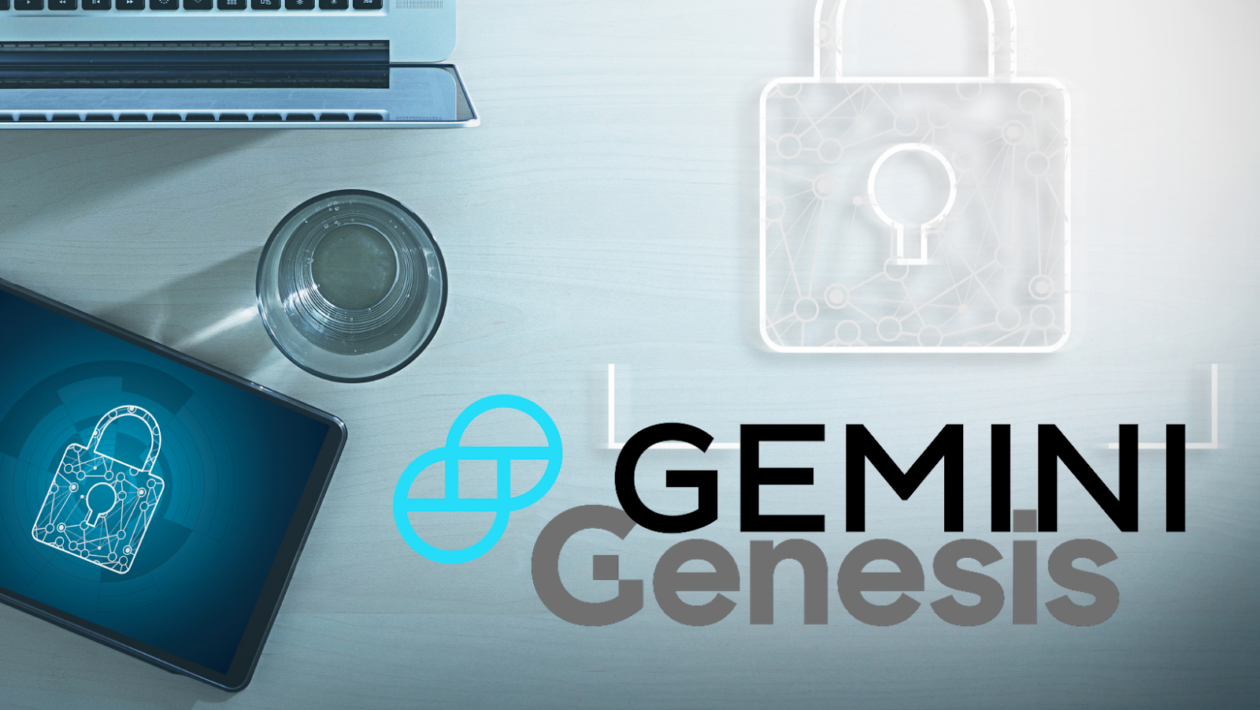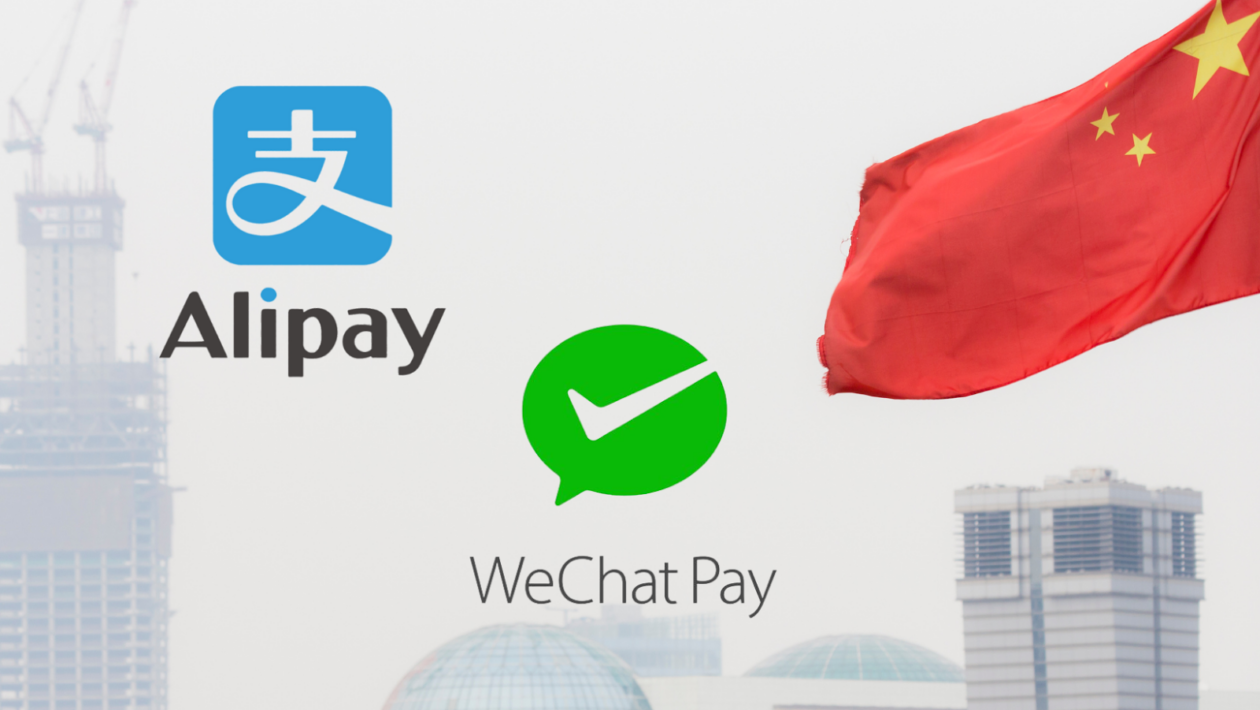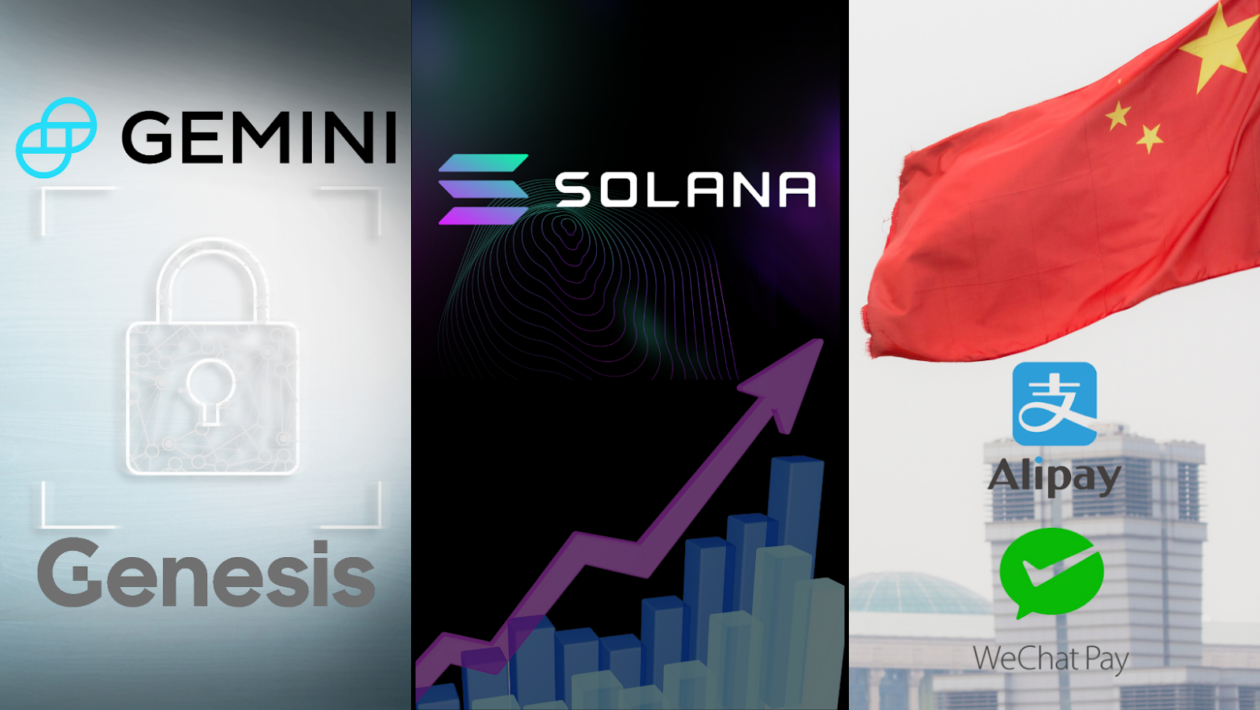In this issue
- Gemini: Falling stars
- SOL: Rising sun
- e-CNY: Partnering for payments
From the Editor’s Desk
Dear Reader,
“Give me transparency or give me death” may not have quite the resonance of the famous call for liberty made by United States founding father and American Revolutionary leader Patrick Henry in 1775, but almost a quarter of a millennium later, it doesn’t seem out of place in relation to the digital asset industry.
The digital asset sector in general — and the cryptocurrency component of it, in particular — arguably suffered a near-death experience last year as prices plummeted and crypto companies collapsed. At the heart of the problems was the industry’s opacity, notably its reliance on sketchy token economics. At the heart of its rejuvenation — possibly even its reinvention — will be transparency.
Investors in digital assets can be forgiven feeling a measure of despair as they have watched the value of their holdings implode and seen their funds frozen in businesses that — had they been held to standards like those routinely applied in other parts of the finance sector — would never have enjoyed such credence.
As if investors hadn’t suffered enough already, recent days have seen yet another big crypto company accused of engaging in practices that wouldn’t even come close to passing the sniff test in mainstream finance. Genesis, owned by Digital Currency Group, which is already being investigated by U.S. prosecutors over suspect fund transfers, and crypto exchange Gemini, co-founded by Westworld escapees Tyler and Cameron Winklevoss, have been charged with selling unregistered securities.
This latest development in an industry whose founding principle was transparency underlines the need for a radical rethink of how enterprises and products in the space are evaluated so that potential investors and customers can make informed decisions before committing funds to them.
It’s with this in mind that Forkast is proud to play its part in bringing increased illumination to an industry that has so far generated more heat than light.
Yesterday in Davos we announced our merger with NFT multi-chain data aggregator CryptoSlam to form Forkast Labs, a new type of Web3-focused media and data intelligence platform.
As Forkast Labs takes shape in the coming weeks and months, offering flagship indices and digital asset business intelligence reporting based on real-time, on-chain data, we look forward to replacing artifice with analysis, imitation with insight, and half-truths with transparency.
Until the next time,
Angie Lau,
Founder and Editor-in-Chief
Forkast
1. Star sign

By the numbers: Gemini SEC — over 5,000% increase in Google search volume.
The U.S. Securities and Exchange Commission (SEC) has charged crypto lender Genesis Global Capital and crypto exchange Gemini Trust with offering and selling unregistered securities to “hundreds of thousands of investors” through the Gemini Earn program, which promised depositors high-interest returns.
- “We allege that Genesis and Gemini offered unregistered securities to the public, bypassing disclosure requirements designed to protect investors,” SEC Chair Gary Gensler said in a statement.
- “Today’s charges build on previous actions to make clear to the marketplace and the investing public that crypto lending platforms and other intermediaries need to comply with our time-tested securities laws,” Gensler added. “Doing so best protects investors. It promotes trust in markets. It’s not optional. It’s the law.”
- Gemini Earn was shut down on Jan. 10 amid a Twitter spat between Barry Silbert, the founder of Digital Currency Group (DCG), which owns Genesis, and Gemini co-founder Cameron Winklevoss, who alleged that Genesis owed Gemini users US$900 million. Silbert has denied the allegations.
- “It’s disappointing that the @SECGov chose to file an action today as @Gemini and other creditors are working hard together to recover funds,” tweeted Tyler Winklevoss, Gemini’s other co-founder. “This action does nothing to further our efforts and help Earn users get their assets back.”
- The charges were announced during the same week as U.S. prosecutors and the SEC started investigating DCG over transfers between the crypto conglomerate and one of its subsidiaries.
- Crypto investors are worried that DCG — which also owns digital asset management giant Grayscale as well as CoinDesk, the crypto news site — may become another casualty in the string of bankruptcies that have rocked the crypto industry over the past year.
Forkast.Insights | What does it mean?
The SEC has thrown the book at two of what were supposed to be crypto’s more cautious players. Gemini and DCG have advocated regulation and gone to some lengths to convince customers and regulators of their pro-regulation bona fides. Both had brought institutional money into the crypto space and given the industry a whiff of Wall Street.
But SEC chief Gary Gensler and his team saw them differently. In its filing, the SEC alleged that the companies had illegally raised billions of dollars (at last count, the Earn program had US$3 billion worth of assets) and misled 340,000 customers in the process.
Gemini co-founder Tyler Winklevoss has been defiant on Twitter and claims he and his team have been speaking with New York’s financial regulator for more than a year, but the case is likely to further soil crypto’s already tarnished reputation.
There are also bigger questions surrounding DCG’s long-term future. Earlier this year, the crypto conglomerate announced that it was closing its wealth management division, and it sacked around a third of its workforce.
It’s now struggling to raise money for its beleaguered brokerage, Genesis, and crypto analysis firm Arcane Research released a report urging investors to pay attention to a warning by DCG that it may have to offload its sizable holdings of Bitcoin and Ethereum. If that happens, the already miserable and persistent Crypto Winter could get even worse.
2. Sun’s up

By the numbers: Solana price — over 5,000% increase in Google search volume.
Solana’s SOL token, once the world’s third most popular cryptocurrency by market capitalization and currently the 11th largest, has rallied 39.5% over the past week, and as of midweek in Asia was trading at US$22.61 according to CoinGecko data.
- Bitcoin, the world’s largest cryptocurrency, had rallied 21.9% over the past week to trade at US$21,276, while Ether was up 18.1%, changing hands at US$1,577.
- Solana posted this week’s biggest gains among the top 10 non-stablecoin cryptocurrencies.
- SOL’s surge was part of a broader crypto market recovery following the release of December’s U.S. Consumer Price Index (CPI), which showed a rise of 6.5% year on year, in line with investor expectations and the smallest increase since October 2021.
- “The data confirms that inflation is finally being tamed, which means there’s a higher chance that the Federal Reserve will pursue less aggressive interest rate hikes in the world’s largest economy,” Nigel Green, chief executive of investment adviser deVere Group, said in an email to Forkast.
- SOL’s price has more than doubled since the beginning of the year following the launch of Bonk, a Solana-focused, dog-themed memecoin aimed at helping the Solana community rebound from its entanglement with bankrupt crypto exchange FTX.
- Despite the estimated 50 million SOL tokens locked up in FTX’s bankruptcy proceedings, activity on the blockchain remains high, Citi Research said in a recent report seen by Markets Insider.
- “Several key metrics such as active addresses and daily non-fungible-token (NFT) volume have returned to pre-FTX-collapse levels, potentially indicating comfort from some users on the chain,” wrote Citi Research analysts led by Joseph Ayoub.
- According to Citi, Solana’s biggest challenge will be maintaining developers and users, after top projects such as DeGods and Yoots announced moves away from the network.
Forkast.Insights | What does it mean?
Solana’s second chance is a reminder that in crypto, there’s always hope. For a network plagued with stoppages and high-profile exits — to say nothing of Ethereum stealing its thunder with its successful Merge upgrade and shift to proof of stake — double-digit gains in the value of a token over the course of just one week should be a thing of the past.
But, as with crypto in general, in the face of overwhelming adversity, some investors appear to be willing to dip their feet back in the water. Some are arguing that the improving macroeconomic outlook is a reason to jump back into the market, a line of thinking that also would explain Bitcoin’s recent uptick. For Solana, however, the forces at play appear to differ.
The outages that plagued the Solana network last year appear to be over, and on-chain activity has returned to pre-FTX collapse levels. The network’s gas fees have also fallen, adding incentives for memecoins such as Bonk to take advantage of its speedy transaction processing.
But although Solana’s resurgence may offer some signs of a thaw in the Crypto Winter, its FTX problem will not go away anytime soon. Now-defunct FTX affiliate Alameda Research holds 48,636,772 SOL tokens worth more than US$11 billion, according to liquidators. While some of that is tied up in contracts that don’t expire until 2028, a significant portion isn’t. That means that a sizable amount of SOL is due to be sold to help recoup losses from the FTX collapse. Dark clouds may still be on the horizon for Solana.
3. Pay packets

China’s central bank will need to work more with payments giants WeChat Pay and Alipay to achieve wider adoption of the e-CNY, the country’s new central bank digital currency (CBDC), as it is currently struggling to get consumers to use it, experts say.
- The new currency, also known as the digital yuan, was first introduced to the public nearly three years ago. In December, it was equipped with a “red packet” feature that enabled users to send cash gifts to friends and family — presents that are typically given out in red envelopes on special occasions.
- The feature was launched in time for the Lunar New Year holiday, which starts on Jan. 21 this year, enabling e-CNY users to send red envelopes via both WeChat Pay, China’s dominant payment app, and rival Alipay.
- “It’s very clear that the digital yuan must be usable on both WeChat Pay and Alipay,” Richard Turrin, a Shanghai-based fintech consultant, told Forkast. “WeChat Pay is the dominant social network, so if you want to be able to send money to people, you have to be on WeChat. Alipay is probably less important, marginally less important, than WeChat, but because of its use in e-commerce, it’s also an important place to be able to use the digital yuan.”
- Turrin added that e-CNY was not designed to replace WeChat Pay or Alipay, but to offer a third payment option.
- “For end users, using the e-CNY wallet is like [having] to manage an extra bank account. It doesn’t give [users] many benefits nor convenience,” Yifan He, CEO of blockchain company Red Date Technology, told Forkast. He added that Chinese consumers were already completely accustomed to making payments via WeChat and that Chinese authorities, if they wish to boost the nation’s CBDC adoption, would have to integrate e-CNY wallets with WeChat Pay and Alipay.
- “People are still reluctant to use e-CNY because they are used to the current ecosystems offered by WeChat Pay and Alipay, and do not see the necessity to change their habits,” Matteo Giovannini, a senior finance manager at Industrial and Commercial Bank of China, told Forkast. He added that the e-CNY app’s new red packet feature was a clear attempt by authorities to change the already ingrained consumer habits in the payment ecosystem.
- The People’s Bank of China started to develop e-CNY in 2014 and began testing the digital currency on ordinary citizens in 2020. The digital yuan is considered the most advanced CBDC project in the world for a major country.
- At the end of last year, around 13.61 billion yuan (US$2 billion) of e-CNY was in circulation in cities where it had been trialed, according to China’s central bank.
Forkast.Insights | What does it mean?
The digital yuan has been around for a while now, but the currency has yet to gain traction among a critical mass of Chinese consumers. Alipay and WeChat Pay have long dominated China’s mobile payment sector, with a combined 90% market share. The Chinese government is wise to realize that the best way to encourage wider adoption of e-CNY would be to not push it as a replacement but to make it work with the two already highly popular payment platforms.
One thing is certain: The People’s Bank of China already considers the digital yuan part of the country’s monetary system. The central bank included e-CNY in its measurement of China’s M0 money supply for the first time in a report released last week. The report showed that the digital yuan accounted for 0.13% of M0.
By giving e-CNY a new red packet feature that allows people to send cash gifts via WeChat and Alipay, the People’s Bank of China is acknowledging that it can’t simply try to elbow out the two private sector giants. Coincidentally, a bank official recently told the state Xinhua News Agency that government crackdowns on internet companies, which began in earnest in 2020 — the same year that the digital yuan was introduced to the public — may come to an end soon.
Officially, the digital yuan is still in the testing phase, as it’s currently available only in cities and areas in which it has been officially trialed. But when the central bank is ready for e-CNY’s full launch, it is looking more likely that the two tech giants will not be shunted aside but enlisted by the Chinese government to facilitate a smooth and wider adoption of its state-backed digital currency.




